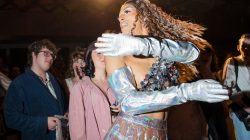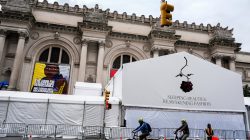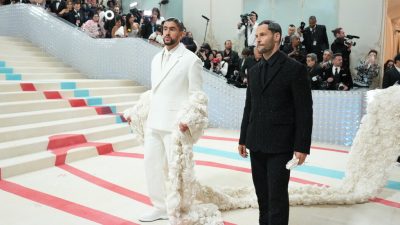This article contains spoilers for Episode 4 of “Feud: Capote vs. the Swans.”
As the latest episode of “Feud” begins, Babe Paley (Naomi Watts) is facing radiation treatment for cancer and the terrifying possibility of her death. But she does so in a full dress and heels. At the same time, Truman Capote (Tom Hollander), who is unraveling from heavy substance abuse, tours his friends around a rehab facility, with a long scarf over his shoulder and a newsboy cap.
Throughout the series, whether it is a pair of carefully applied eyelashes or strands of pearls, the outfits of the protagonists are a piece of a puzzle they can control in a world where, despite wealth, their actual power is limited.
In advance of the release of the fourth episode, members of the Styles desk discussed one of the enduring trends Paley started; the department store as a lost sanctuary; and how modern, unnaturally youthful faces can affect a period piece.
VANESSA FRIEDMAN There were a few key moments for me in this episode. First, when Babe ties her Hermès scarf around her bag, which set off a trend that is still going on today.
And then watching her put herself together so deliberately for her radiation treatment, only to arrive at the hospital and take everything off again. That to me was so poignant, and evocative of how these women used clothing as armor.
GUY TREBAY The hospital prep scene may be one of the best observed in the series.
It would be interesting to know why Paley indulged in that scarf gimmick, since otherwise what was notable about her style was her resistance to ostentation.
JESSICA TESTA Let’s talk about that. Why do you think that trend caught on? Personalization? Displaying wealth (scarf) on wealth (bag)?
FRIEDMAN The scarf question is a good question. There’s an insouciance to it that is attractive, like a pretend casualness: “Oh, this old, very expensive thing?” On the one hand, it is a very calculated display; on the other, it seems almost cavalier.
TREBAY In spirit, it’s the antithesis of all the costly bag “charms” so many labels would later cash in on.
FRIEDMAN It’s like ultrawealthy D.I.Y.
TESTA I’m thinking of all the “I Love NY” charms we saw at the Coach show this week (pretzels, Statues of Liberty, tourist mugs).
But actually, this episode felt particularly New York-y to me, what with the touching Bergdorf window scene at the end. (Also a clever promotional tie-in, considering the Bergdorf windows are currently promoting “Feud.”) Did it really happen?
FRIEDMAN I think that Bergdorf scene was poetic license. Which again reflects how big a role fashion plays in this story. The department store as relationship denouement; consumerism as code.
TREBAY Speaking of trends, a reader wrote about the show’s casting after the Black and White Ball conversation. His observation was that all the actors have “modern” faces — that is, in certain ways unnaturally youthful.
TESTA Do you think the “modern face” observation is something that hurts the show? Like the actresses are less believable because they don’t look convincingly of that era?
FRIEDMAN I think that between filters and fillers and surgeries and what have you, we’ve lost all sense of what age actually looks like.
TREBAY That is 100 percent true. In that period — and except among a small percentage of the exceptionally rich — a 60-year-old human could be expected to look his or her biological age. That is fact, not a moral judgment. Medical technology changed all that.
TESTA Yet the obsession with maintaining appearances hasn’t changed. Just look at Babe going for her scan, putting on those false eyelashes. Beauty was armor then, just as lip fillers might be now.
FRIEDMAN But as Babe says, “The show must go on: I do the makeup, the hair, the jewels.” Today, you would add: the airbrushing.
TREBAY And the shifts in body morphology.
FRIEDMAN The irony is, I bet, if the characters had actually looked their age, everyone wouldn’t believe they were real. As it is, we have to identify the era — ’50s, ’60s, ’70s — via the outfits.
TREBAY To return to the department store scene, it’s saddening that the “third place,” that secure environment distinct from your home or your job, has effectively disappeared from urban life.
I thought about this the other day walking past Bergdorf Goodman. It was evening and the window dressers were doing an installation. That element of urban theater is practically defunct.
Where would Holly Golightly go now to chase away the mean reds?
TESTA She would fall down a TikTok K-hole.
Vanessa Friedman, Guy Trebay, Jessica Testa and Katie Van Syckle contributed reporting.
Sumber: www.nytimes.com










